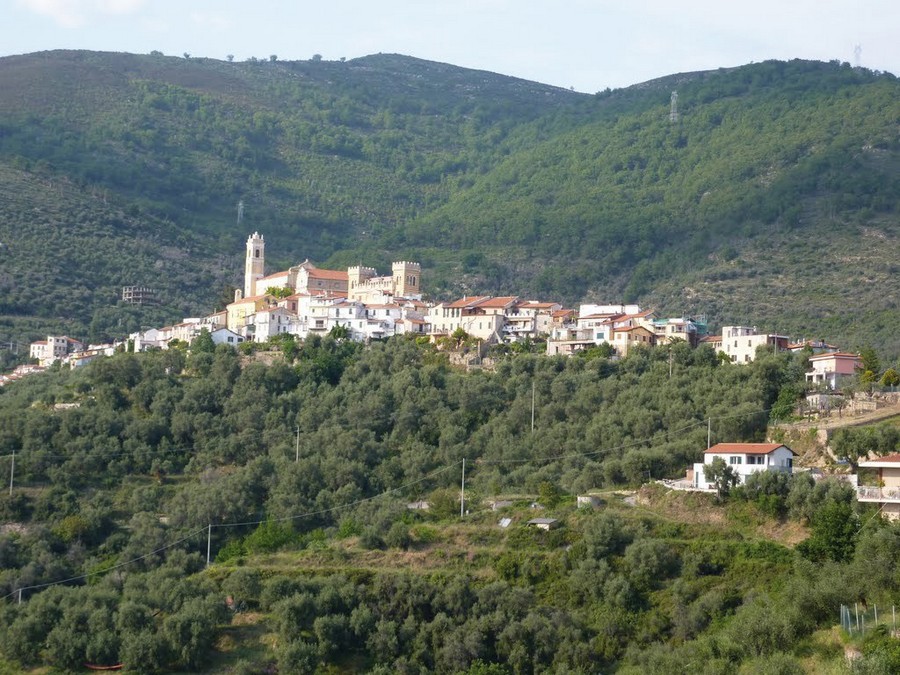Altitude: 77 m a.s.l.
Area: 19 sq km
Distance from Imperia: 21 km
Inhabitants: in 1881: 1148 - in 2017: 1265
Patron Saint Day: August 1st - San Pietro in Vincoli
Information: Municipality phone 0184 479050
Immediately to the east of the built-up area of Taggia, the detour that leads to Castellaro branches off upstream of Via Aurelia.
Visit of the town
Leave the car at the end of the village near the rustic rough-stone church of San Bernardo and walk down in front of the church on Via Lampedusa along which the village develops.
After passing a series of vaults, when you reach the widening you’ll find on the right an architrave carved with the motto: "Unica spes nostra solideo est" (our only hope is solidarity); continuing, pass under the vault with an aedicule and then under the portico of Via Mazzini which has a window-door on the left, pass the Municipal Loggia with seats and then take the right on Via Mazzini.
Beyond the widening on the left with a fresco dedicated to the Virgin, take a little further on to the left the “Salita” to the Church which leads you to the oldest fortified nucleus of the village: of the original defensive structures, remains on the right the tower with intact machicolations that you can observe from near once you arrive to the churchyard.
The Baroque church of San Pietro in Vincoli, flanked by the contemporary massive oratory of Assunta, preserves in the last altar on the right the anonymous polyptych of the "Assumption" and the lively wooden group "San Pietro in vincoli" attributed to Maragliano; to the left of the high altar is affixed the eighteenth-century carved-marble cabinet.
From the churchyard go down the staircase to the left of the tower and return to the main street that leads you to the square with a castle-shaped palace with crenellated towers at the end of the village.
From there along the same road return to the car and continue towards the mountain reaching the Sanctuary of Lampedusa, on whose façade a fresco reminds of the history of the church or rather that of Andreas Anfossus, written in Latin outside and translated into vernacular inside.
On the two sides of the altar there are two deep niches that host numerous votive offerings, including sailing ships hanging from the ceiling, which testify the gratitude of the worshippers and in particular of the sailors who benefited from the miraculous “sailing Madonna”.


